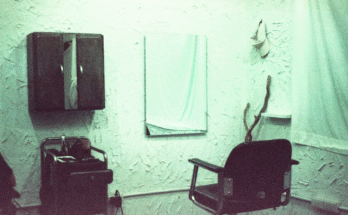Photography is more than just a hobby or a profession — it’s a way of seeing the world. Through a camera lens, the ordinary becomes extraordinary, fleeting moments are frozen in time, and overlooked details come into sharp focus. Every photograph tells a story, not just about its subject, but also about the person behind the camera and how they perceive the world around them.
In an age when almost everyone carries a camera in their pocket, the art of truly seeing through the lens is what separates a casual snapshot from a captivating image. From capturing raw emotion to framing beauty in unexpected places, photography changes the way we experience life.
Changing Perception: A Photographer’s Eye
Once you start viewing the world through a camera lens, your perception changes. Everyday scenes take on new meaning. A puddle reflects the sky in a way you’ve never noticed before. A shadow on the wall turns into abstract art. A street vendor’s expression becomes a powerful portrait of resilience.
Photographers learn to seek light, symmetry, emotion, and texture in all they see. This shift in vision encourages mindfulness — an ability to live in the present and appreciate details that others may miss. A camera, in this sense, becomes a tool for slowing down and paying attention.
Storytelling Through Imagery
A powerful image can tell a full story without a single word. Whether it’s a child blowing out birthday candles, a bride and groom exchanging vows, or a protestor standing silently in defiance, photography conveys emotion, context, and narrative instantly.
Viewing the world through a camera lens teaches you to recognize and document these storytelling moments. It pushes you to ask questions: What’s happening here? What do I want others to feel when they see this? Why does this moment matter?
As a result, photography becomes a form of personal expression. It allows you to share your worldview, your emotions, and your experiences with others in a deeply impactful way.
Discovering Beauty in the Mundane
One of the great gifts of photography is that it reveals beauty where we least expect it. A decaying wall, a cluttered kitchen, or an empty bench in the park might not catch the eye of a passerby, but through a photographer’s lens, these subjects become rich with character and meaning.
Macro photography, for instance, can expose the delicate veins of a leaf or the intricate texture of a rusted bolt. Street photography highlights the poetic chaos of urban life. Even the act of photographing your daily walk can reveal how sunlight hits a sidewalk differently each day.
This awareness not only enriches your photography but also deepens your appreciation of the world itself.
The Emotional Lens
Photographers don’t just capture what they see; they also capture what they feel. Joy, sorrow, surprise, or nostalgia — these emotions influence how a scene is framed, lit, and composed. The camera becomes an emotional lens as much as a physical one.
This is particularly true in candid and event photography. The best images from weddings, parties, or community events are often the unscripted ones — a grandmother’s proud smile, children laughing uncontrollably, or a heartfelt hug between old friends. These moments, when caught authentically, become treasured memories.
This emotional element also extends to interactive photography experiences. A photo booth rental Las Vegas, for instance, doesn’t just provide guests with a souvenir — it creates a space where people let their guard down, laugh, and show their true selves in front of the camera. It’s another example of how viewing the world through a lens can create joy and capture it simultaneously.
Technical Skills vs. Creative Vision
It’s easy to become fixated on gear, settings, and specs. But while technical knowledge is important, it’s your creative vision that ultimately shapes your photography. Composition, timing, and emotion often outweigh megapixels and lens sharpness.
That said, learning how to use your camera — whether it’s a smartphone or a DSLR — will give you the freedom to experiment and bring your ideas to life. Knowing when to use natural light, how to adjust exposure, or which lens to choose are skills that enhance your ability to tell stories visually.
The goal is to balance technique with perspective — to use the camera not just as a tool, but as an extension of how you view the world.
Seeing With Fresh Eyes Every Day
You don’t have to travel to exotic locations or wait for special occasions to find inspiration. Some of the best photographs are taken in backyards, living rooms, or on everyday commutes. Challenge yourself to find one photo-worthy moment each day. Over time, this habit sharpens your eye and deepens your creative instincts.
Try different genres: portraiture, landscape, architecture, documentary. Shoot in black and white one day, and high contrast color the next. Each variation helps you see the world in new ways — and with a camera in hand, you’re always ready to frame that discovery.
Conclusion
Viewing the world through a camera lens transforms how we connect with our environment, our emotions, and each other. It encourages mindfulness, invites creativity, and empowers us to preserve the beauty of fleeting moments. Whether you’re documenting life’s milestones or simply noticing the way light hits your kitchen table in the morning, photography reminds us to look — and to really see.
And whether it’s through everyday snapshots, professional portraits, or even spontaneous fun at a photo booth rental during a celebration, every click of the shutter is a chance to frame joy, tell a story, and capture the essence of life as it happens.




